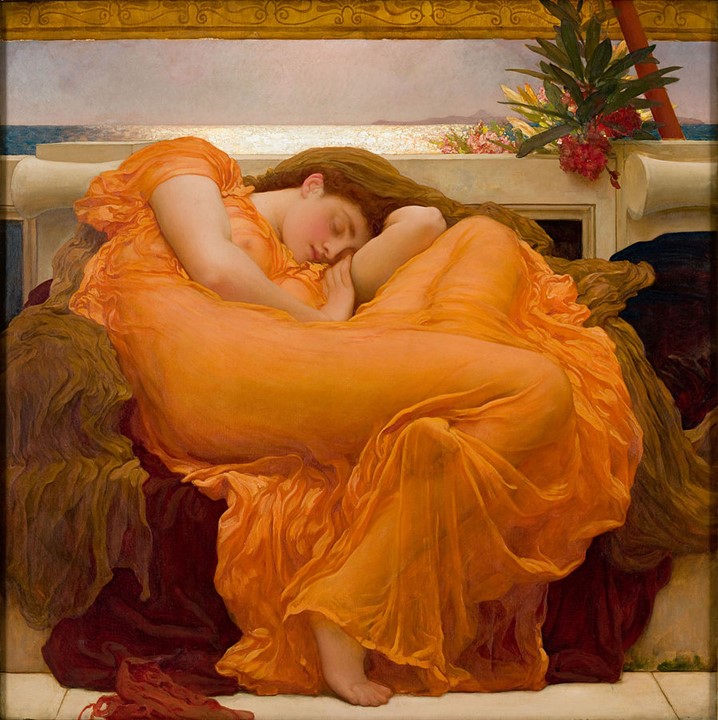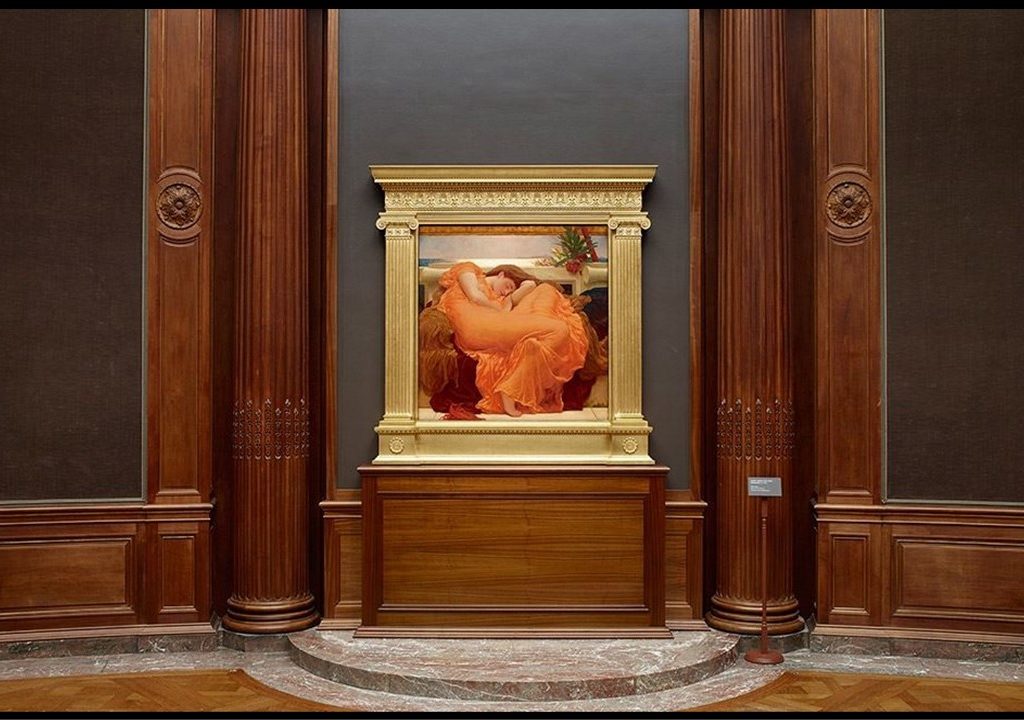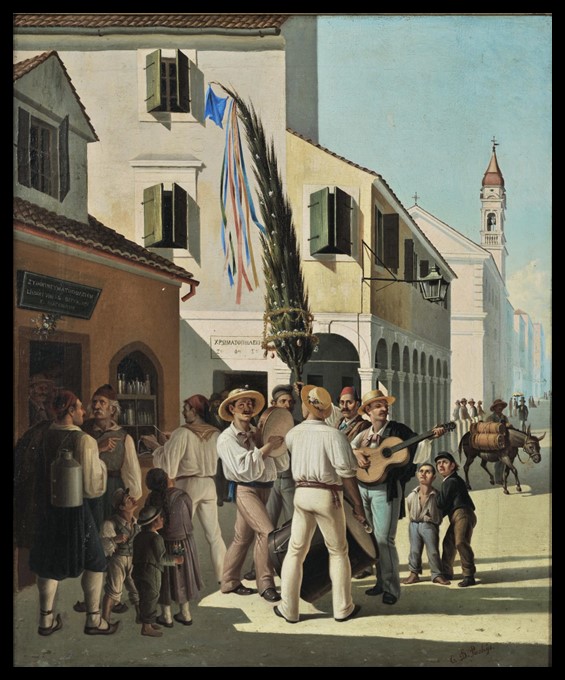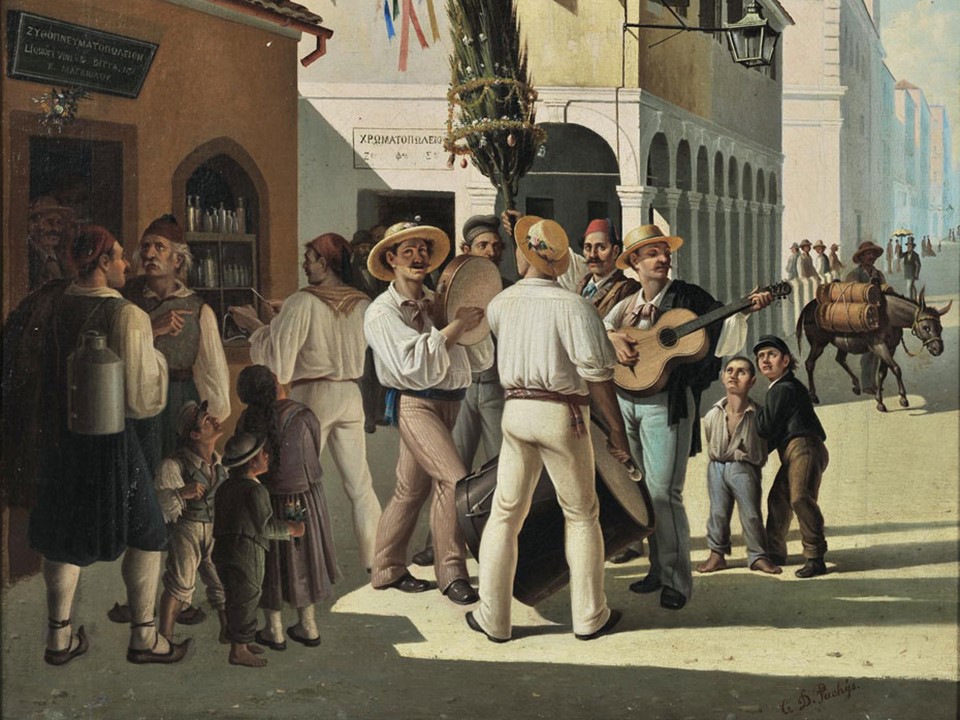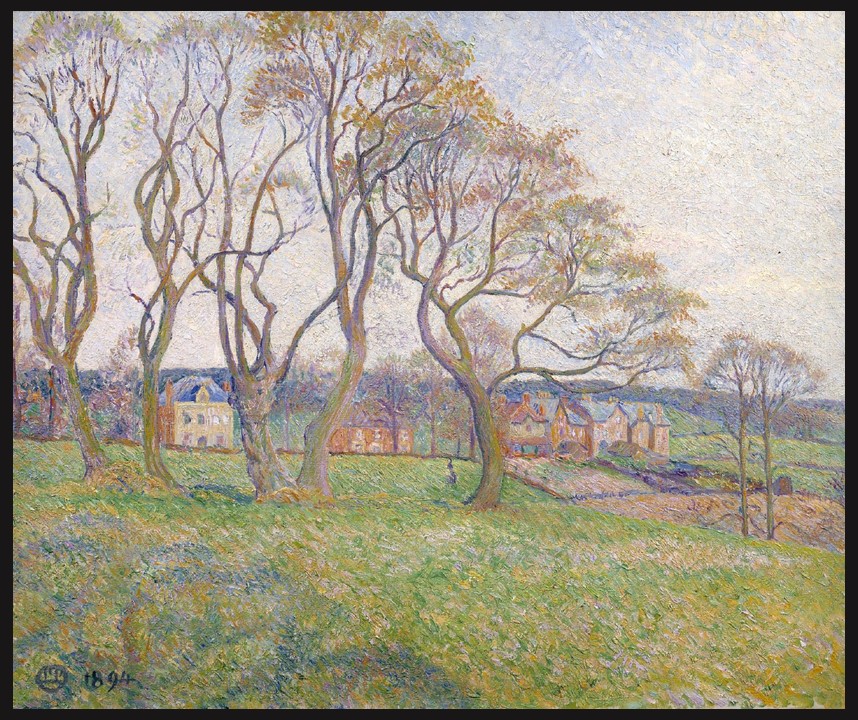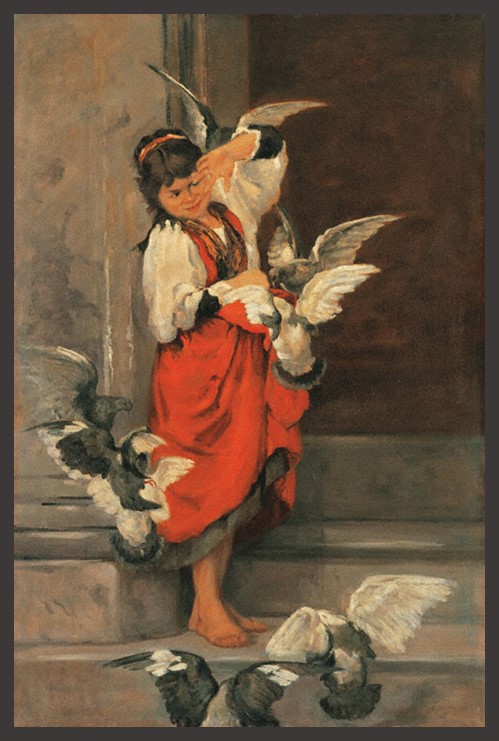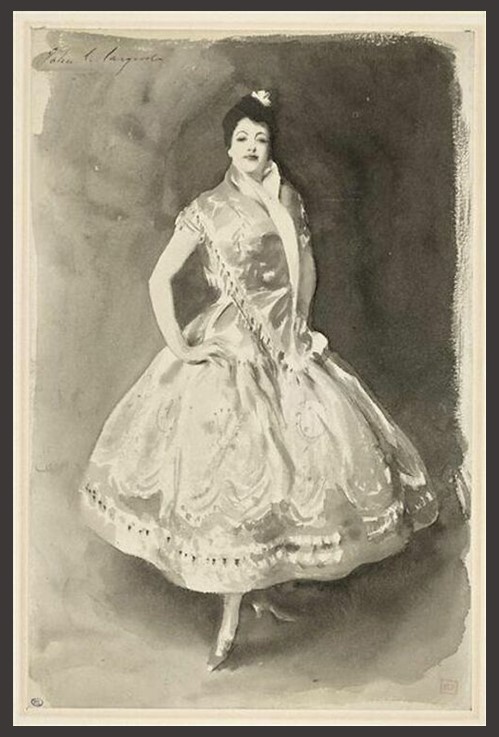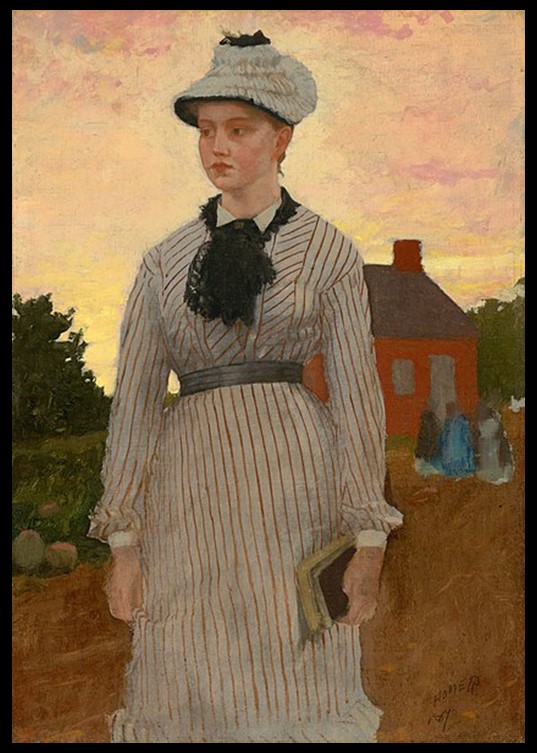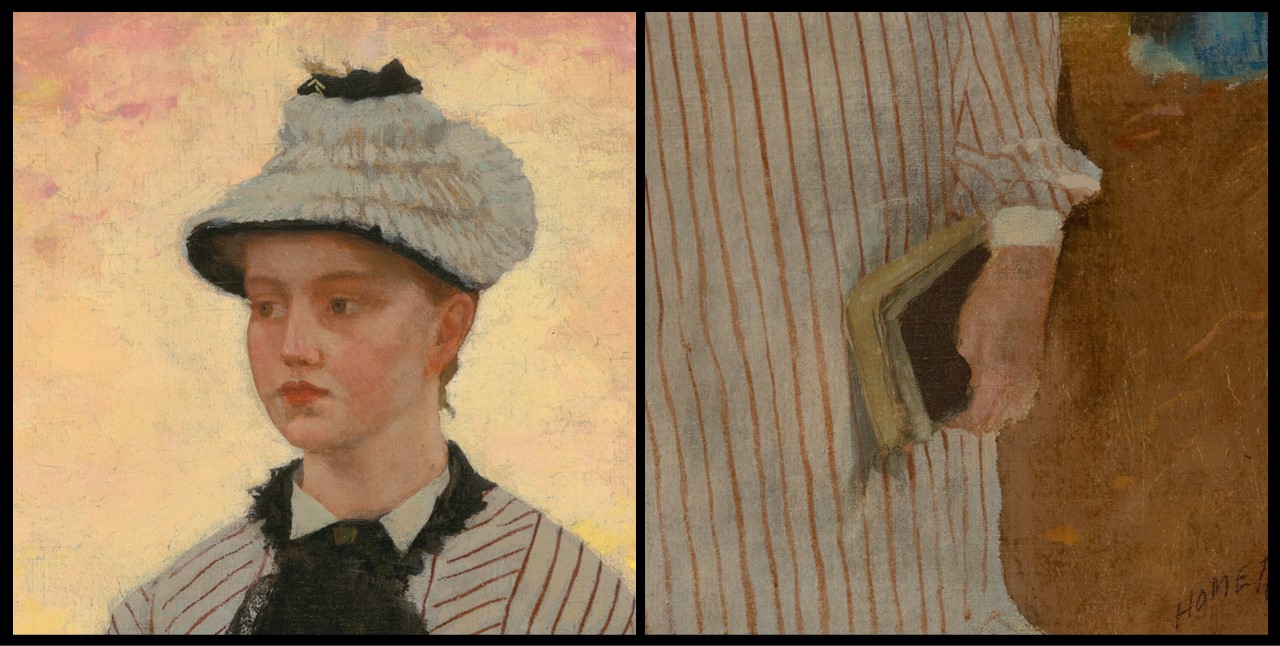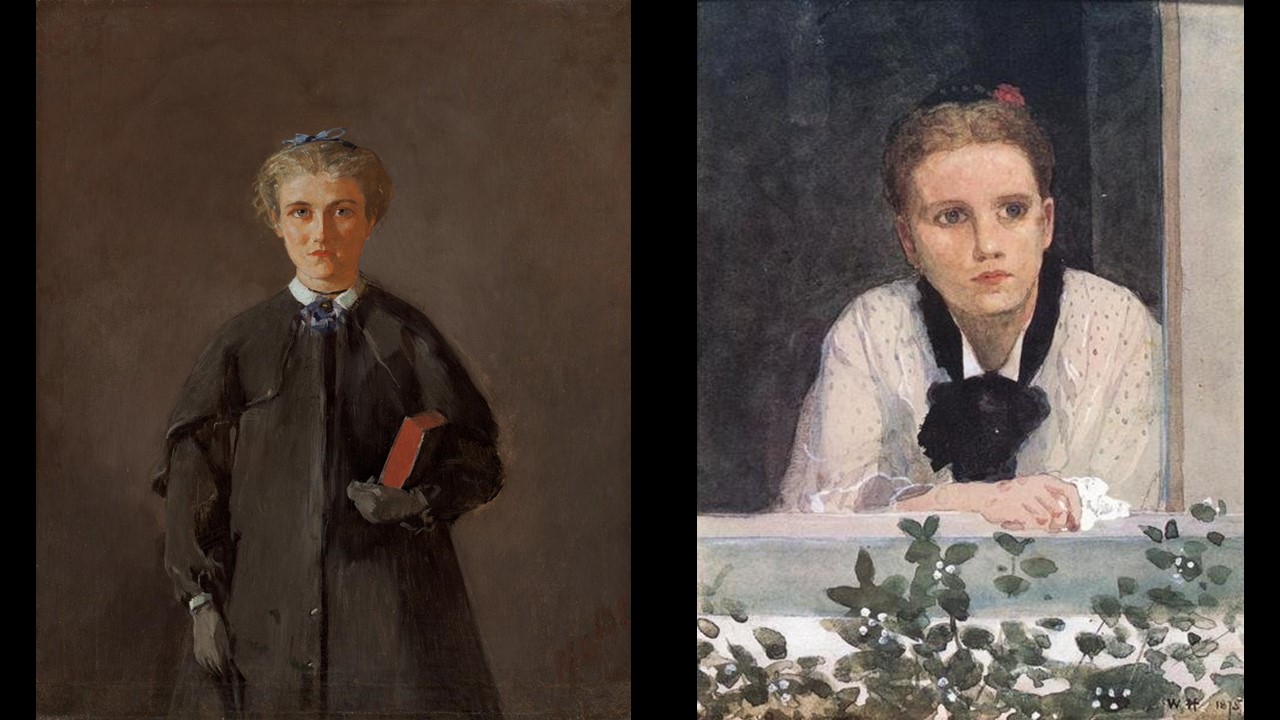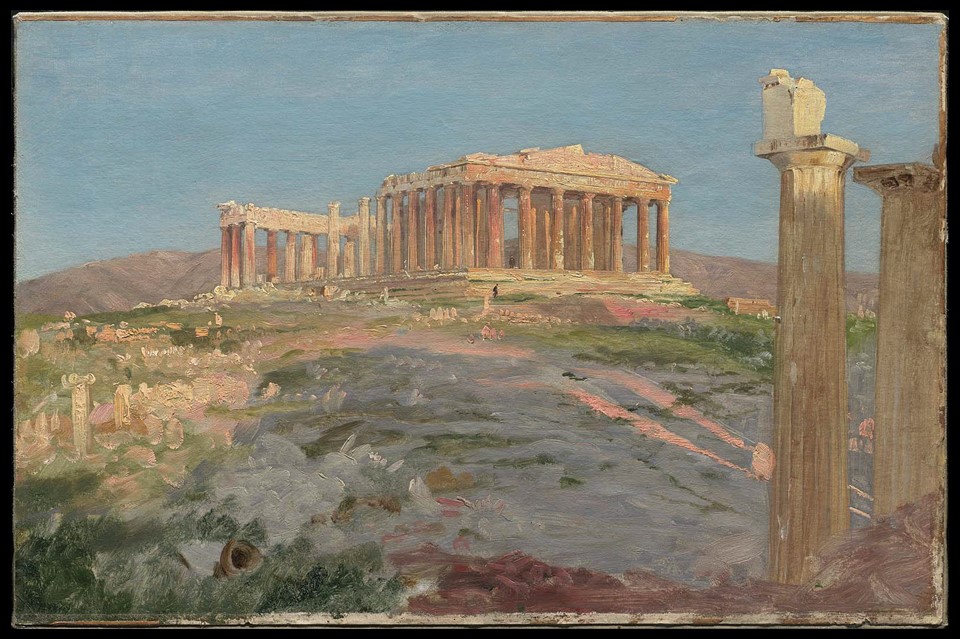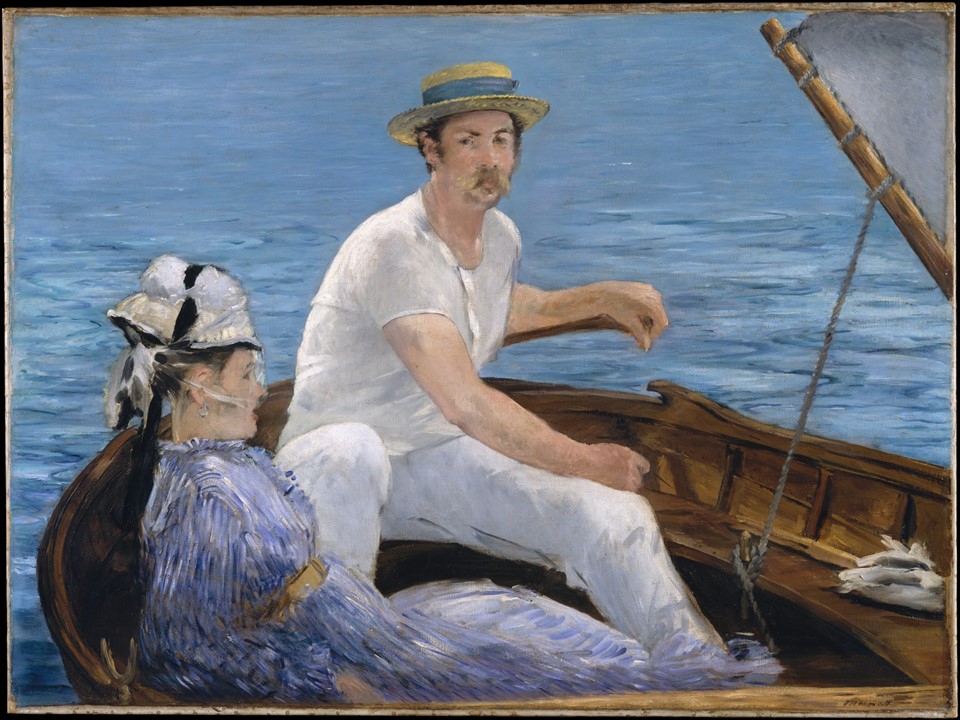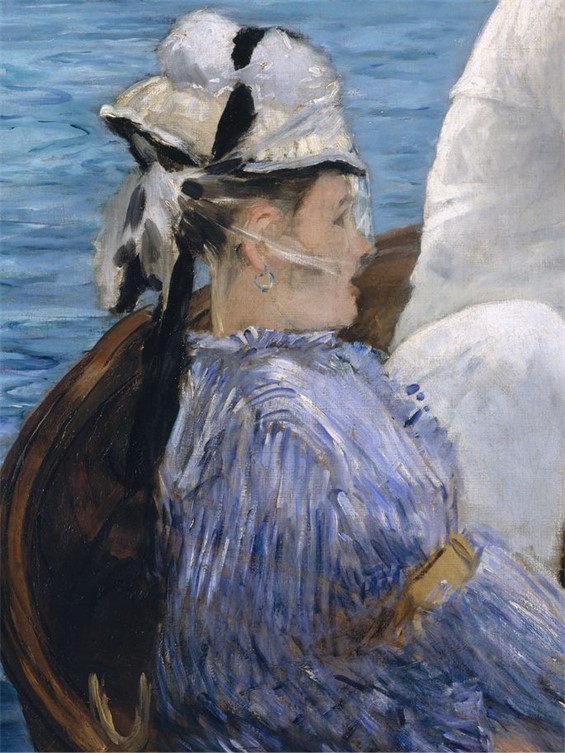
A Windmill on a Polder Waterway, Known as ‘In the Month of July’, 1889, oil on canvas, 102×66 cm, Rijksmuseum, Amsterdam, Netherlands
https://www.flickr.com/photos/paulodykes/41487209442
Behold! a giant am I! / Aloft here in my tower, / With my granite jaws I devour / The maize, and the wheat, and the rye, / And grind them into flour. / I look down over the farms; / In the fields of grain I see / The harvest that is to be, / And I fling to the air my arms, / For I know it is all for me. … Ah, how the world has changed / Since the days of the old windmill, / When July’s hot breath would still / Its sails, and the sun would parch and dry / The wind that once turned it at will! writes Henry Wadsworth Longfellow. His poem The Windmill captures the power and importance of windmills in the past, and how they were able to harness the power of the wind to grind grain into flour. The mention of July’s hot breath and the parching sun also gives a sense of the summer season. The painting In the Month of July by Paul Joseph Constantin Gabriël exhibits the same characteristics. https://www.hwlongfellow.org/poems_poem.php?pid=311
Paul Joseph Constantin Gabriël (1828-1903) was a Dutch painter known for his landscape paintings. He was born in Amsterdam and trained at the Royal Academy of Art in that city. Gabriël’s early work was influenced by the Barbizon school of painting, which emphasized the realistic representation of nature. Later, he was influenced by the Hague School of Painting, which focused on capturing the atmosphere and mood of the landscape. Gabriël became a leading member of this movement.
His paintings often depict the Dutch countryside, with its wide open spaces, flat fields, and skies filled with clouds. He was particularly interested in the effects of light and atmosphere, and his work often has a serene and contemplative quality. Gabriël’s paintings were well received during his lifetime and he received numerous awards and honors. He exhibited regularly in the Netherlands and also showed his work in Paris and London. His paintings can be found in many museums around the world, including the Rijksmuseum in Amsterdam, the Kröller-Müller Museum in Otterlo, and the National Gallery of Art in Washington, D.C. Gabriël was also a respected teacher and had many students who went on to become successful painters. He died in Scheveningen, Netherlands, in 1903.
Our country is saturated with colour. … I repeat, our country is not grey, not even in grey weather, nor are the dunes grey… wrote Constant Gabriël in a letter, and unlike many Hague School painters, he actually enjoyed depicting a beautiful summer day. The painting In the Month of July by Paul Joseph Constantin Gabriël showcases exactly what he believed! https://www.rijksmuseum.nl/en/collection/SK-A-1505
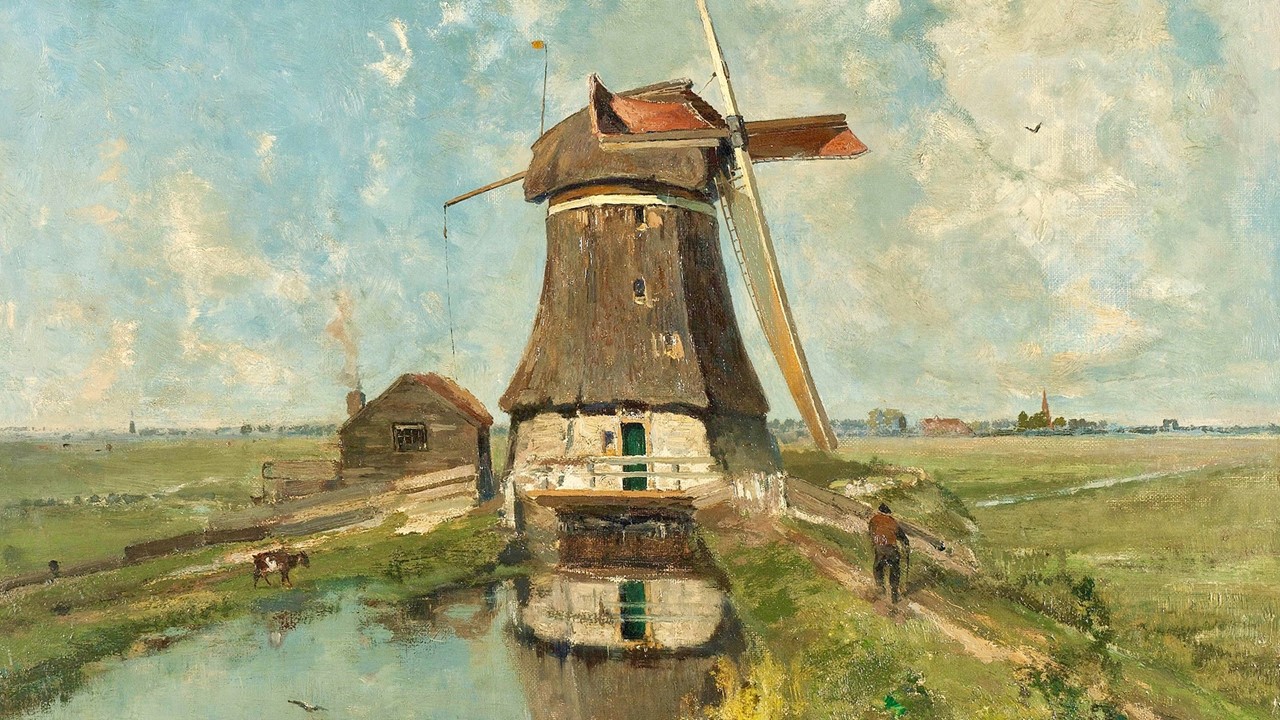
A Windmill on a Polder Waterway, Known as ‘In the Month of July’ (detail), 1889, oil on canvas, 102×66 cm, Rijksmuseum, Amsterdam, Netherlands
https://www.facebook.com/artcast.tv/photos/a.163558460467584/1693309424159139/?paipv=0&eav=AfYjlWfaHMycMhlM4ACQ1Vz0rULzCzRoWXl-_3-zb_8JMGG0fhXBknkcrGxRS4Zq58w
The painting, completed in 1889 and currently in the collection of the Rijksmuseum, depicts a typical Dutch landscape in the height of summer. In the foreground, there is a field of tall grass and wildflowers, while in the distance there is a small village nestled among trees. The sky is filled with fluffy clouds, and the light of the sun is reflected in the water in the foreground. The painting is characteristic of Gabriël’s work, which often focused on the Dutch countryside and the effects of light and atmosphere. His paintings typically have a calm, contemplative quality, and ‘In the Month of July’ is no exception.

A Windmill on a Polder Waterway, Known as ‘In the Month of July’ (detail), 1889, oil on canvas, 102×66 cm, Rijksmuseum, Amsterdam, Netherlands
https://www.facebook.com/artcast.tv/photos/a.163558460467584/1693309424159139/?paipv=0&eav=AfYjlWfaHMycMhlM4ACQ1Vz0rULzCzRoWXl-_3-zb_8JMGG0fhXBknkcrGxRS4Zq58w
Gabriël was associated with the Hague School of Painting, which emphasized realism and an interest in capturing the atmosphere and mood of a particular place. He was also influenced by the Barbizon School of Painting, which emphasized the realistic representation of nature. His paintings often feature the flat fields and wide skies of the Dutch countryside, and he was particularly interested in the changing effects of light and weather. In the Month of July is a beautiful example of Gabriël’s work, showcasing his skill at capturing the beauty and serenity of the Dutch landscape in the summer season.
For a PowerPoint on Paul Joseph Constantin Gabriël’s oeuvre, please… Check HERE!

